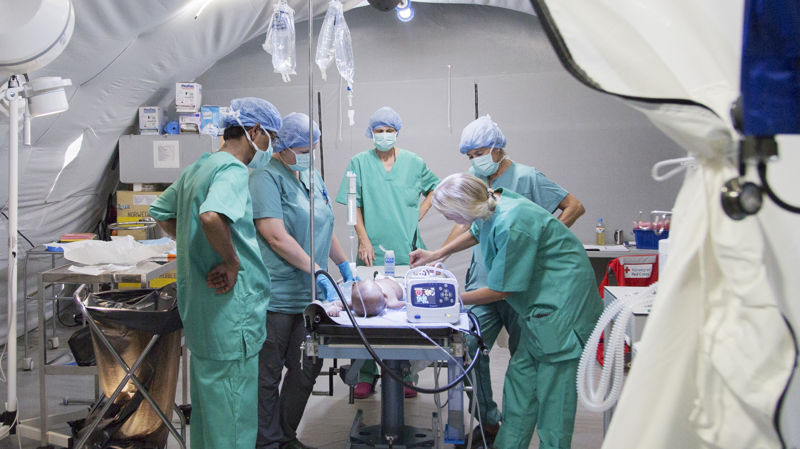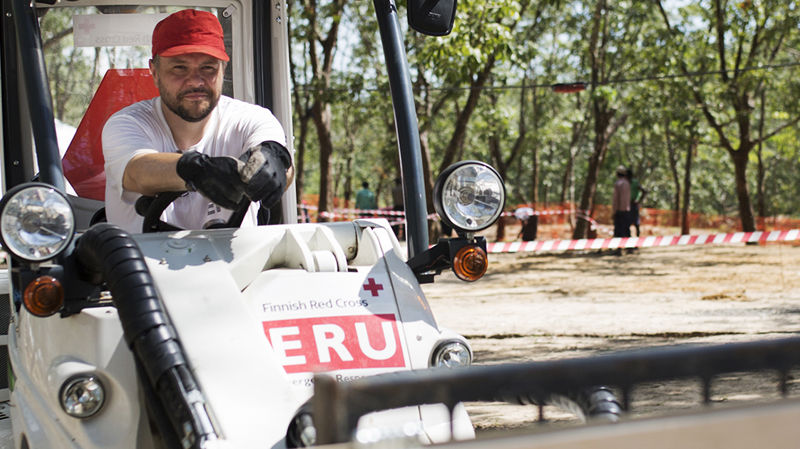Clinics and mobile clinics provide primary health care

A Red Cross clinic can be sent to a disaster-stricken area if there are no local primary health care services or they are insufficient. Clinics operating in a fixed location or mobile clinics can be sent to the region.
A Red Cross clinic provides the same type of healthcare as a health centre. It manages first aid, prevention and treatment of infectious and any tropical diseases, child health services, pregnancies and childbirth and health advice.
If necessary, the clinic can also provide vaccinations and assessments of the local population’s state of health and nutrition. The clinic can also be modified to respond solely to epidemics, such as cholera. A clinic is accompanied by around 10–15 aid workers, and local staff are also recruited for various tasks.
A fixed clinic can serve an area with a population of around 20,000–30,000 people. It can care for 50–200 patients in a 24-hour period. There are also beds available at the clinic.
Mobile clinics bring help to those who need it
Mobile clinics consist of one to three units, as needed, which move between pre-determined locations to provide primary health care, counselling and preventive care. The clinic usually moves from one location to another in a vehicle, inside which a consulting room can be set up. Staff can also set up a consulting room in a school or other public space, or even visit the homes of people in need.
If necessary, patients are sent from the clinic to a hospital for further treatment.
A mobile clinic is typically needed in a sparsely populated area with 10,000–20,000 inhabitants. It does not have an inpatient ward.
In recent years, mobile clinics have been used in Ukraine, for example, where vehicle-based clinics provide primary health care to elderly people in hard-to-reach areas.
More information about mobile clinics can be found here, and information on clinics operating in fixed locations can be found here.

